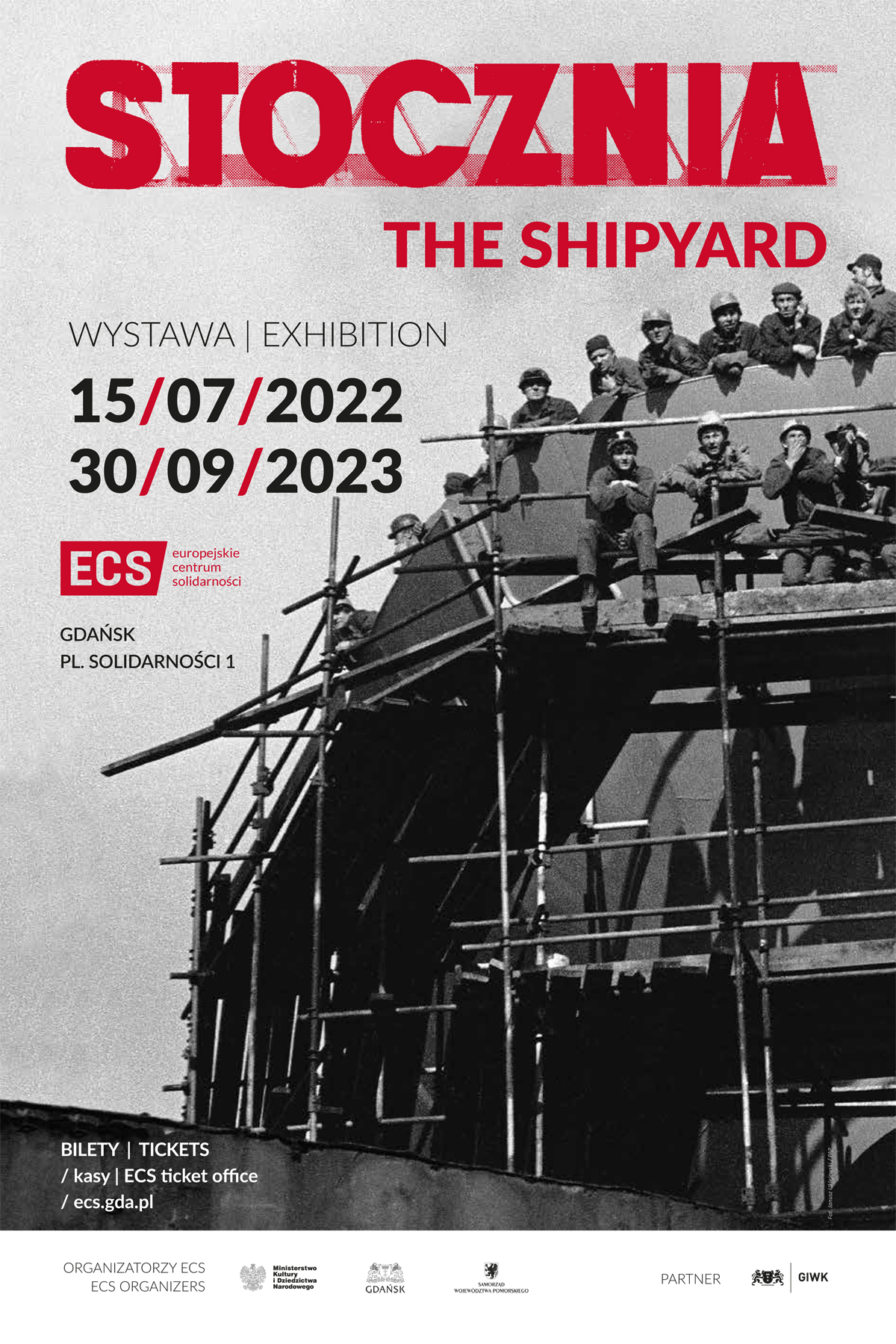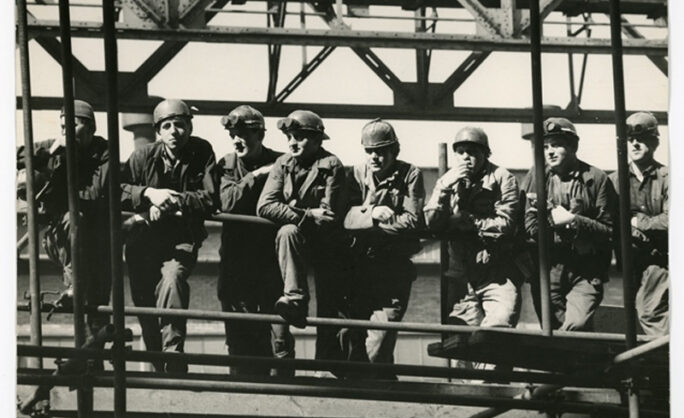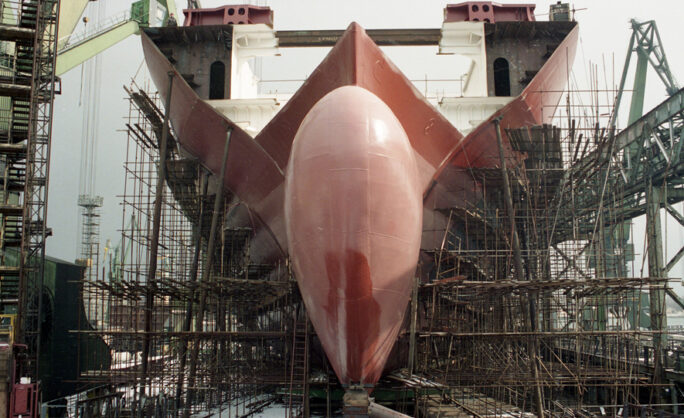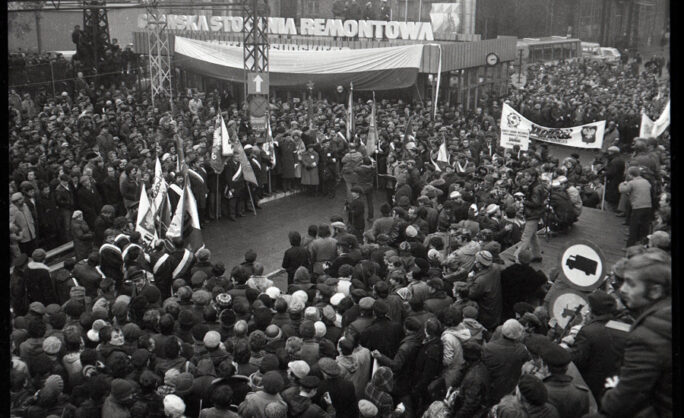- exhibition
- ticketed admission
-
buy a ticket
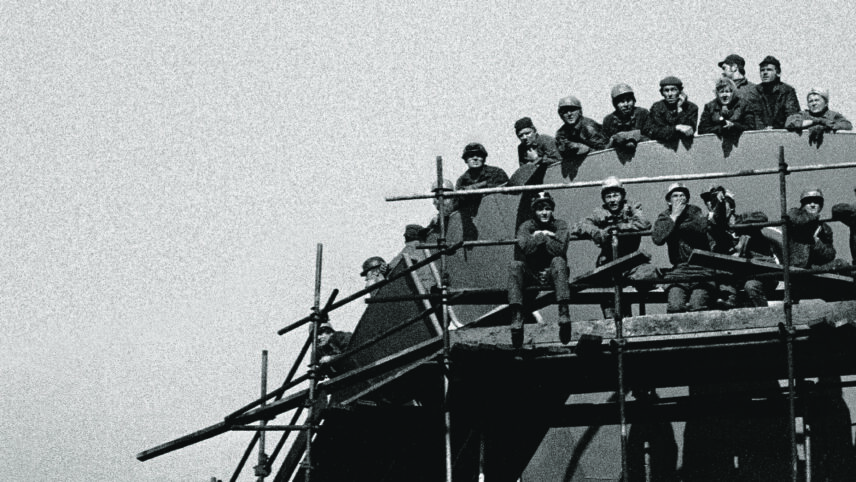
THE SHIPYARD
Man. Industry. City
Gdańsk’s shipbuilding history is an intertwined story of politics and industry, but also of the impact of the shipyard on the city and the city on the shipyards. There is no Gdańsk without the shipyard experience. And democratic traditions in the world without the legacy of Solidarność.
Key facts
The first comprehensive exhibition on the history of the state-owned shipbuilding industry in Gdańsk, more than 150 years of the city’s history – from the mid-19th century, when the first shipyard of the Prussian state was established in Gdańsk, through the history of two world wars, the Gdańsk Shipyard under communism to the present day. The exhibition tells the political, social and cultural history of Poland and Europe from the perspective of the experience of shipbuilding in Gdańsk. At the centre of the exhibition’s story are the fates of people, not ships.
- The largest temporary exhibition the ECS team has organised since the opening of the permanent exhibition on the Solidarność revolution at its headquarters at 1 Solidarność Sq.
- In the 470 square metres of the temporary exhibition hall, we have built a shipyard out of steel and sheet metal, materials that reigned in the shipyard. While viewing the exhibition, the visitor follows a route from the gate through the ship’s side in the dock and the cranes to the slipways.
- The narrative of the exhibition consciously departs from the chronological model, based on a selection of the most important phenomena relating to the history of shipbuilding in Gdańsk. They interact with each other in a variety of ways, building a network of interconnections. At the centre of the exhibition is the social and political experience of the Gdańsk Shipyard under communism, a place of rebellion against dictatorship, a “solidarity factory”.
- In the exhibition, the visitor will see: the shipyard workers’ work tools and clothes, posters, company diplomas, an ID card or model ship, as well as art that illustrates the theme. Everything will be enriched with photographs, films and multimedia. So-called symbolic objects are worthy of attention, such as a copy of a shoe belonging to a girl passenger on the torpedoed ocean liner Lusitania in 1915 (original in the collection of the Liverpool Museum), an ashtray made by a Polish student from the Danziger Werft (1934), and a shipyard jacket with a bullet mark from December 1970. Many of these exhibits will be shown to the general public for the first time.
- The exhibits come from nearly 40 institutions and individuals, from Poland and abroad. We have used, among others, the collections of the State Archive in Gdańsk, the PAN Library in Gdańsk, the Museum of Gdańsk, the National Museum in Gdańsk, the Stutthof Museum in Sztutowo, the National Museum in Szczecin, and the Zamoyski Museum in Kozłówka. The exhibition will also be the first opportunity to present the related collections of the ECS in a wider context.
- 2022 marks the 75th anniversary of the Gdańsk Shipyard and the 70th anniversary of the Remontowa Shiprepair Yard
Exhibition theses
- We are documenting more than 150 years of not only industrial, but also political, cultural and social European history, which centred on the shipbuilding sites in Gdańsk.
- The unique multidimensionality and timelessness of the heritage encoded in it makes it a universal place of remembrance with which everyone can identify.
- This is where great history happened. We are aware that for most Gdańsk residents and tourists the shipyards are primarily the place where Solidarity was born, the birthplace of modern Polish democracy. The shipyards are fascinating as places of rebellion against communist dictatorship, of people fighting for workers’ and civil rights. This fact is recognised by the European Commission, which has awarded the European Heritage Label to the historical complex of buildings in the Gdańsk Shipyard – the BHP Hall, Gate No. 2, Solidarity Square with the monument to the Fallen Shipyard Workers of 1970 – and the European Solidarity Centre, which carries out extensive educational activities and promotes the legacy of Solidarność.
The ECS also as a place documenting the Solidarność revolution has been honoured in recent years with the Council of Europe Museum Award and the Europa Nostra European Heritage Award.
Currently, the Ministry of Culture and National Heritage, together with the city of Gdańsk, are applying to have the Gdańsk Shipyard inscribed on the UNESCO World Heritage List. - The mission of the European Solidarity Centre, located in the post-shipyard areas, has been a commitment to the preservation, study and dissemination of the shipbuilding material and cultural heritage since it began operations in 2008. We organise scientific conferences, lectures, carry out publishing activities on the shipyards and train local guides. In the space of the ECS building and in its surroundings we show exhibitions, conduct art workshops, educational activities, as well as walks and trainings inspired by the shipyard heritage. The ECS is a meeting place for former shipyard workers and collects valuable memorabilia from the shipyards and records notations and films dedicated to them. The institution also works with local activists and organisations to build a new urban fabric in the post-shipyard areas.
- It is important to remember that even before the opening of its premises at Solidarności Square in August 2014, the ECS prepared the first documentation of the historic buildings of the Gdańsk Shipyard and handed it over to the provincial conservator of historical monuments.
- It would be incomplete to present only the bright sides of Gdańsk Shipyard’s history. We also bring up the lesser-known history of this place – the memory of two world wars, German imperialism and Nazism, politicisation under communism.
- Today, cultural life is thriving around Solidarity Square and the ECS, and a new service and commercial city centre is emerging. North of the ECS the shipbuilding industry is still active. Remontowa Holding, one of the largest shipyards in Europe, operates on Ostrow Island. The ECS exhibition on the shipyard is our contribution to this process of change, and at the same time our contribution to upholding the best humanist and democratic tradition of Poland and Europe.
- We place people, not ships, at the centre. Gdańsk’s shipbuilding history is an intertwined story of politics and industry, but also of the impact of the shipyard on the city and the city on the shipyards. There is no Gdańsk without the shipbuilding experience. And there is no democratic tradition in the world without the legacy of Solidarność.
THANK YOU
The exhibition has been made possible thanks to the financial support of Henryk Soyka and Piotr Soyka’s family
